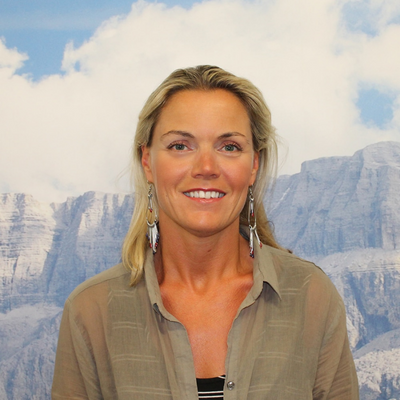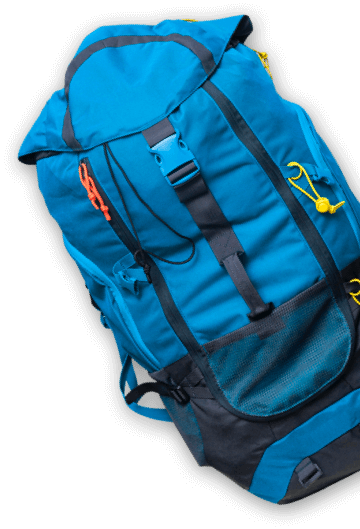03 Aug 20
Nepal: the ideal destination for a solo traveller
A few years ago I spent a month travelling in India. While it was a fascinating, eye-popping experience with unparalleled moments of joy, it tested me. It was often tough and confronting; many times I didn’t feel safe. There were days when I almost booked a flight home. The intense crowds, pushy touts, sexual advances, unwanted attention, persistent beggars, pollution, rubbish, chaos and disrespect got extremely tiring.
So, as a first-time female solo traveller to neighbouring Nepal I was a little nervous. What I discovered were tremendous differences between the two subcontinent countries, along with exceptionally friendly, humble, welcoming and generous locals who made sure that I was well looked after.
I loved every minute in Nepal, from the moment I stepped off the plane. Here’s why:
Visas and customs
Visas and customs are quick and easy to get through at Kathmandu’s Tribhuvan International Airport. In the arrivals hall there are electronic registration machines that read your passport, take your photo, and print out a completed visa form to submit to immigration. Helpful friendly staff provide assistance.
The culture shock wasn’t severe
I’m not usually a fan of chaotic polluted cities but the holy cows, stray dogs, traffic chaos, blaring horns, scooters, hawkers, electric wires, and pungent smells were welcoming and exciting, not overwhelming or disorienting. Kathmandu has an amazing vibe, and if you are overcome with the need for tranquillity you can always escape to the walled Garden of Dreams, across the street from the former Royal Palace.
Nepal is a deeply spiritual place
Buddha was born here (in the sacred area of Lumbini in the south). Kathmandu is home to some of the most revered temples in both the Buddhist and Hindu community. Walking clockwise around The Great Stupa of Boudhanath and spinning the prayer wheels is a must.
Gentlest and Polite
The Nepalese have one of the gentlest and politest forms of greeting you will ever come across. Derived from the ancient Sanskrit script, Namaste means ‘I bow to the divine in you’. The gesture represents the belief that there is a divine spark within each of us that is located in the heart chakra. Namaste is usually spoken with a slight bow and hands pressed together, palms touching and fingers pointing upwards, thumbs close to your chest. You can also use a ‘Namaste’ for farewells and for demonstrating your gratitude too.
Language isn’t a barrier
Most Nepali people speak basic English, though of course it’s still worth learning a few words of Nepalese. I was relaxed and had fun bargaining for prayer flags, Buddha statues and pashminas in the tourist district of Thamel.
Curiosity
Indians are incredibly curious about Western culture and ask the same litany of personal questions, over and over. Nepalis are very laid back and won’t invade your personal space. Nepali men are not prone to staring or making muttered comments to foreign women. In Kathmandu and Pokhara I wandered freely, alone, without even a sideways glance.
There weren’t many beggars in Kathmandu and I encountered none while trekking around the foothills of the Annapurna range. In India, begging is much more widespread, numerous and persistent; the guilt and the desire to help can be overwhelming.
My licensed, first-aid accredited trekking guide
A Buddhist from the Tamang group of Nepalese people was great company during my trek. Helpful, attentive and respectful he taught me much about Nepalese culture and language, and of course the stunning Himalayan mountain peaks. My Nepalese porter did all the hard work for me, and often sprinted ahead on the trail to secure a room with an attached bathroom.
I didn’t get sick
No tummy bugs, no altitude sickness. Before I left home I took the oral cholera vaccine, which has been shown to significantly reduce the incidence of traveller’s diarrhoea. Yes, staying healthy in Nepal requires a bit more effort than at home, but if you wash your hands properly, drink filtered water, make smart food and drink choices (no ice, salads) and are cautious about gaining altitude then you are unlikely to have any problems.
The food
Nepali food is not Indian food, and it’s healthier and less heavy because cream is not used. While Nepalese food does share some similarities with Indian food (bright colours, amazing flavours, variety of ingredients), it is unique and the spice mix is different (salt, fenugreek, turmeric, cumin, ginger, garlic, green chillies, coriander).
The standard Nepalese meal, eaten twice daily by many Nepalis, is dal-bhat-tarkari: lentil soup, white rice, curried vegetables and sour pickles, often served on a heavy metal plate with metal cups. I ate plenty of dal bhat while I was in Nepal and had many different varieties. I loved it! It’s delicious and satisfying, and I was served as many helpings of extra rice and vegetables as I could handle.
Eating dal bhat with your fingers adds to the experience, but it’s okay to use a spoon and fork. Good quality Western food is readily available in Nepal, but I never ordered it.
Thanks to the influence of Tibet, Nepal also has momo: steamed dumplings with savoury fillings, usually water buffalo, chicken, yak cheese or chopped vegetables. Nepalese people love momo. So do I.
On a yoga retreat in Pokhara I ate organic vegetarian food prepared with love in accordance with Ayurvedic principles. While trekking in the foothills I enjoyed hearty noodle soups with seasonal vegetables in warming broth.
Water
Getting or making safe drinking water is easy. Filtered water was available at all the hotels and trekking lodges where I stayed. When I ran out, I filled up my bottle with tap water and added a purification tablet. Easy.
Accommodation
The rooms in the trekking lodges were basic but comfortable and atmospheric, and oh so quiet at night. I was delighted to find hot showers, clean Western toilets and wifi. I padlocked my room because the lock was provided, not because I thought my belongings were at risk.
Uniqueness
Nepal is an extremely different place to its neighbours. Because I didn’t have to worry unnecessarily about hygiene, safety, or language I was free to focus on spiritual enlightenment and the epic snow-capped peaks. I even conquered my fear of heights and went paragliding in Pokhara – one of the best places in the world to take flight, with stable thermals, convenient take-off and landing zones, and a big lake!
Security
In Nepal I felt exceptionally safe, welcomed and at ease. You will too.

Written By
Samantha McCrow
Sam is an seasoned hiker and travel writer with 20+ years experience as a content and marketing specialist. She started out as a commissioning editor for Lonely Planet guidebooks and now regularly shares stories and insights about the world's most iconic and rewarding hiking trails.

